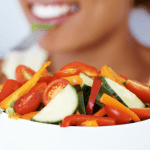The foods you eat may be contributing to your vaginal yeast infections. Yeast loves sugar. Avoiding certain foods, also known as a the Candida diet, can curb the growth of yeast in your body. White flour and rice are example of simple carbohydrates that convert to sugar and should be avoided foods or drinks fermented with yeast.

The high concentration of prebiotics found in fermented foods feeds the good bacteria, bad bacteria, and yeast alike. So if you’re dealing with candida overgrowth, and already have an overpopulation of bad bacteria, eating fermenting foods only adds fuel to that fire. Probiotics can help, include supplements containing lactobacillus or acidophils.

These will help repopulate the good bacteria and bring back the balance. Take care of any of your health issue. Avoid taking antibiotics. Only take them if it’s absolutely necessary. I think we all heard that, you know, everybody takes antibiotics for just a little small little thing that may be able to heal on its own. So make sure it’s absolutely necessary that you need to take those antibiotics before you do, because this does mess up with your gut flora and may also lead to vaginal yeast infections.
Vaginal pH balance helps avoid vaginal yeast infections
The delicate balance of the vagina’s ecosystem is intrinsically linked to its pH levels. When in harmony, the vaginal pH hovers around the slightly acidic mark of around 3.5. This unique acidic environment is nature’s safeguard, ensuring harmful pathogens and opportunistic invaders like Candida albicans stay at bay. However, various factors, from diet, over menstruation to certain medications, douches and moisturizers can tilt this balance, veering it towards alkalinity. When this happens, the defense mechanism weakens, giving Candida, the chief culprit behind vaginal yeast infections, a window to thrive. Understanding the and preserving this pH equilibrium is paramount for the overall well-being and defense of the vaginal milieu.








